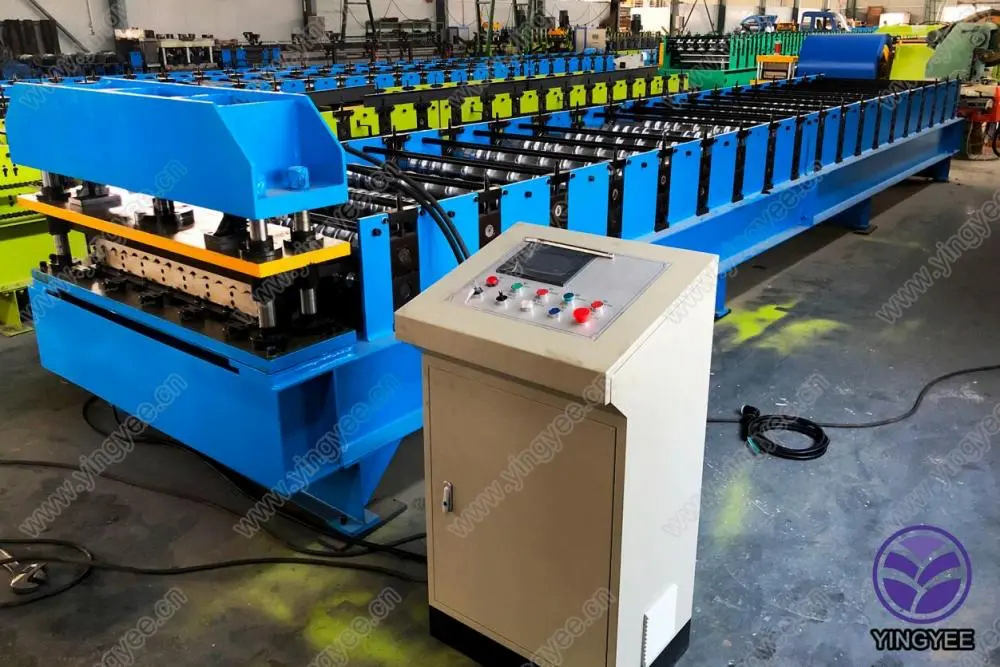
Ceiling T Grid Roll Forming Machine An Overview
In the field of construction and architecture, ceiling systems play a crucial role in enhancing the aesthetic appeal and functionality of buildings. One of the pivotal components of these systems is the T grid, which provides structural support for ceiling tiles and panels. To meet the increasing demand for ceiling T grids, manufacturers are turning to advanced technologies such as roll forming machines. This article provides an overview of the ceiling T grid roll forming machine, its working principles, benefits, and applications.
What is a Ceiling T Grid Roll Forming Machine?
A ceiling T grid roll forming machine is specialized equipment designed to manufacture T-shaped grid components for suspended ceilings. This machine converts flat metal sheets, usually made of steel or aluminum, into T-shaped profiles. The roll forming process involves feeding the metal through a series of rollers, each carefully designed to bend and shape the metal into the desired T grid configuration. The output is a highly accurate, uniformly shaped T grid that can be further processed and installed in various ceiling systems.
Working Principles
The operation of a ceiling T grid roll forming machine begins with the loading of metal sheets onto the feeding mechanism. As the sheets pass through the machine, they are guided through a set of rollers that progressively shape them into the T profile. The rollers are typically made from high-quality steel and are engineered to endure the stress of continuous operation. Key components of the machine include
1. Feeding System This mechanism ensures that the metal sheets are fed into the roll forming line at a consistent rate. 2. Roll Forming Stations Multiple roller stations are used to achieve the desired shape. Each station contributes to precise bending and shaping.
3. Cutting Mechanism After the T grid is formed, it is cut to length as required. This can be done using an automated cutting tool controlled by a programmable logic controller (PLC).
4. Output Table Finally, the finished T grids are discharged onto an output table, ready for packaging or further processing.
Benefits of Using Roll Forming Machines
The ceiling T grid roll forming machine offers several advantages over traditional manufacturing methods

1. Consistency and Precision The roll forming process ensures uniformity in dimensions, which is crucial for easy installation and a quality finish.
2. Cost-Effectiveness Once set up, roll forming machines can produce large volumes of T grids with minimal material waste, leading to cost savings for manufacturers.
3. Flexibility Many roll forming machines can be adjusted or customized to produce various shapes and sizes of T grids, accommodating diverse design specifications.
4. Automation Modern machines are often equipped with advanced control systems, allowing for automation that increases production rates and reduces labor costs.
5. Durability The finished products exhibit superior strength and durability, making them suitable for a wide range of applications.
Applications of Ceiling T Grids
Ceiling T grids are integral to both residential and commercial buildings. They are used in various applications, including
- Suspended Ceilings Providing support for acoustic tiles, fire-rated panels, and decorative ceilings. - Office Spaces Enhancing aesthetics while allowing for easy access to wiring and air conditioning systems. - Retail Environments Creating visually appealing displays without compromising functionality.
Moreover, T grids can be designed to accommodate unique architectural requirements, making them versatile for different construction projects.
Conclusion
The ceiling T grid roll forming machine has revolutionized the way T grids are produced, offering benefits that enhance efficiency, precision, and adaptability. As the demand for sophisticated ceiling systems continues to rise, investing in advanced roll forming technology is essential for manufacturers seeking to stay competitive in the construction industry. With ongoing innovations in roll forming machinery, the future looks bright for ceiling T grid production, paving the way for even more creative and functional ceiling designs.